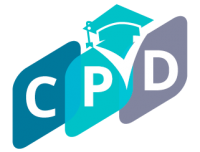Introduction:
Feedback is a powerful tool in the learning process, providing students with valuable insights into their strengths and areas for improvement. In the realm of studying, effective feedback goes beyond grades—it serves as a guide for growth, helping students refine their strategies and elevate their academic performance. In this article, we will explore the significance of effective feedback in studying and how assessments can be leveraged to enhance overall learning outcomes.
- Feedback as a Continuous Learning Tool: Effective feedback is not a one-time event but a continuous process woven into the fabric of the learning journey. It is a dynamic exchange between educators and students that fosters a deeper understanding of the material, encourages reflection, and propels ongoing improvement. View feedback as a conversation rather than a final judgment, embracing the iterative nature of learning and the potential for continuous refinement.
- Clarifying Expectations and Objectives: Before delving into assessments, clear communication of expectations and learning objectives is crucial. Students should understand the criteria against which their performance will be evaluated. This clarity sets the foundation for meaningful feedback by aligning student efforts with the desired learning outcomes. Clearly articulated expectations empower students to focus their efforts on key areas and engage more purposefully with the learning material.
- Constructive Feedback vs. Grades: While grades provide a quantitative measure of performance, constructive feedback offers qualitative insights that drive improvement. Rather than simply assigning a score, educators should provide specific comments that highlight what the student did well and areas where enhancement is needed. Constructive feedback offers actionable insights, guiding students toward a deeper understanding of concepts and refining their study approaches.
- Timeliness of Feedback: Timely feedback is essential for its maximum impact. Waiting too long to provide feedback diminishes its effectiveness, as students may have moved on to new topics or lost the context of their earlier efforts. Aim to deliver feedback promptly after assessments to ensure its relevance and applicability. Technology can facilitate quicker feedback turnaround, allowing educators to provide insights in a more timely manner.
- Encouraging Self-Reflection: Effective feedback prompts self-reflection. Encourage students to review their assessments, consider the feedback provided, and identify areas for improvement. This reflective process cultivates metacognitive skills, fostering a deeper understanding of one’s learning process. Incorporate questions in feedback that guide self-reflection, such as asking students to identify challenges faced during the study process or strategies they found particularly effective.
- Individualized Feedback: Recognize the unique strengths and challenges of each student by offering individualized feedback. Tailor your comments to address the specific needs and learning styles of each student. Acknowledge areas where a student excels and provide targeted guidance on aspects that require attention. Individualized feedback demonstrates a personalized approach to learning, promoting a sense of ownership and responsibility for one’s academic journey.
- Feedback as a Dialogue: Transform feedback into a two-way dialogue. Encourage students to seek clarification, ask questions, and engage in a conversation about their performance. This interactive approach fosters a collaborative learning environment where students actively participate in shaping their educational experience. Establish open lines of communication, whether through in-person discussions, virtual office hours, or dedicated feedback sessions.
- Setting Goals for Improvement: Feedback should not only identify areas for improvement but also assist students in setting actionable goals. Work with students to establish realistic and achievable targets based on the feedback provided. These goals become milestones for progress, allowing students to measure their advancement over time. Goal-setting transforms feedback into a roadmap for improvement, guiding students on their journey toward academic success.
- Formative and Summative Assessments: Balance formative and summative assessments to provide a comprehensive view of student progress. Formative assessments offer ongoing insights during the learning process, allowing for real-time adjustments. Summative assessments provide a snapshot of overall performance and serve as benchmarks for achievement. The combination of formative and summative assessments informs a holistic understanding of a student’s academic development.
- Utilizing Technology for Feedback: Leverage technology to enhance the feedback process. Online platforms, interactive quizzes, and digital tools allow for efficient and interactive feedback delivery. Utilize multimedia elements, such as audio or video feedback, to convey nuanced insights and create a more engaging experience. Technology can streamline the feedback loop, making it more accessible and adaptable to diverse learning environments.
- Encouraging Peer Feedback: Integrate peer feedback into the learning process. Peer assessments empower students to evaluate each other’s work, fostering a collaborative and supportive community. This not only expands the perspectives from which feedback is received but also cultivates valuable evaluation skills in students. Establish clear criteria and guidelines for peer feedback to ensure its effectiveness and fairness.
Conclusion:
Effective feedback in studying is a dynamic and essential component of the learning process. By recognizing its role as a continuous learning tool, clarifying expectations, prioritizing constructive feedback over grades, ensuring timeliness, encouraging self-reflection, providing individualized insights, fostering a dialogue, setting goals for improvement, balancing formative and summative assessments, utilizing technology, and incorporating peer feedback, educators can create an environment where students thrive and continuously refine their academic skills. The power of feedback lies not only in its ability to assess but in its potential to inspire growth, resilience, and a lifelong commitment to learning.
